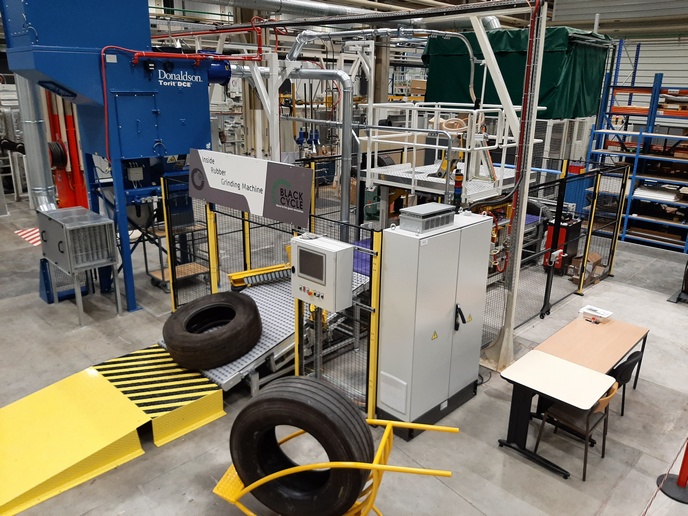End-of-life tyres: from waste to a valuable resource
High-quality recycled materials from end-of-life tyres (ELTs) for new tyres and accessible ELT feedstock are insufficient. Since 2020, approximately 1.6 billion ELTs, totalling 26 million tonnes, have become waste globally each year, with Europe contributing 3.5 million tonnes. Furthermore, 50 % of collected tyres in Europe are exported for valorisation elsewhere. Although 90 % of ELTs are collected in Europe, most are used for energy recovery or non-tyre applications like playgrounds and rubber goods. Only a small portion is reused in new tyre production owing to inadequate quality.
Four key challenges
As highly technical products, tyres must balance safety, lifespan and energy efficiency. To maintain these standards without compromising performance, especially when replacing fossil materials, innovative technologies for processing ELTs into high-quality raw materials are essential. Scaling up laboratory technologies for tyre applications is also crucial for supplying large quantities of new raw materials. This requires investment and expertise to develop processes that ensure consistent quality. However, competing with established fossil raw materials poses challenges, as they have optimised productivity and amortised investments. “The new value chain requires further investment and optimisation, and it is uncertain whether consumers will pay more for tyres with recycled content. Therefore, it is crucial to enhance the new tyre value chain, ensuring full valorisation of its outputs,” notes Jean-Michel Douarre, coordinator of the EU-funded BlackCycle project. Ultimately, the new value chain’s life cycle assessment must surpass that of fossil materials and current recycling methods like energy recovery, without causing new environmental problems.
The main technological breakthroughs
BlackCycle sought to establish a tyre circular economy by transforming ELTs into high-technology second raw materials. It developed new technologies and optimised the entire value chain to eliminate resource waste and minimise environmental impact. In the upstream part of the value chain, project partners introduced an innovative deconstruction process. Before tyres are fully taken apart, MICHELIN developed two machines to separate valuable rubber components. An inside rubber grinding machine extracts inner liner rubber to create micronised rubber powder (MRP), which can be reused in new tyres. An outside rubber cutting machine cuts tread rubber, which is then processed to produce oils and higher quality recovered carbon black. It could as well be used to produce pure MRP made of tread rubber. This careful separation enhances material value and promotes recycling. The remaining tyre parts are processed to separate metal, textile and rubber pellets for further use. Rubber pellets undergo pyrolysis, a high-heat process without oxygen, breaking them into gas, oil and solid parts. The gas powers the process, while the solid yields recover carbon black and minerals. The oil, known as tyre pyrolysis oil, also called crude tyre tar (CTT), is rich in carbon and hydrogen. The Auger and moving bed processes were refined to enhance oil quality for producing high-grade materials. The production of high-quality secondary raw materials (SRMs) requires refining crude tyre tar (CTT) involving a distillation step. This process separates the CTT into heavy tyre tar (HTT) and light tyre tar (LTT). HTT replaces fossil fuels in ORION’s furnace process to create sustainable carbon black, a high-quality product comparable to commercial carbon blacks. LTT is further distilled into resin tyre tar, rich in limonene and used to make s-resin, a technical plasticiser developed by MICHELIN.
A viable value chain
“By developing 5 new processes and 4 new SRMs, BlackCycle significantly reduces greenhouse gas emissions compared to traditional energy recovery and chemical recycling methods. The new sustainable and recovered carbon blacks emit less CO2 than virgin carbon black throughout their life cycle,” concludes Jean-Michel Douarre. “Furthermore, recovering the inner liner MRP results in three times lower CO2 emissions than producing new inner liner rubber.”
Keywords
BlackCycle, sustainable carbon black, value chain, circular economy, MICHELIN, end-of-life tyres, micronised rubber powder, plasticizer, pyrolysis, distillation.



